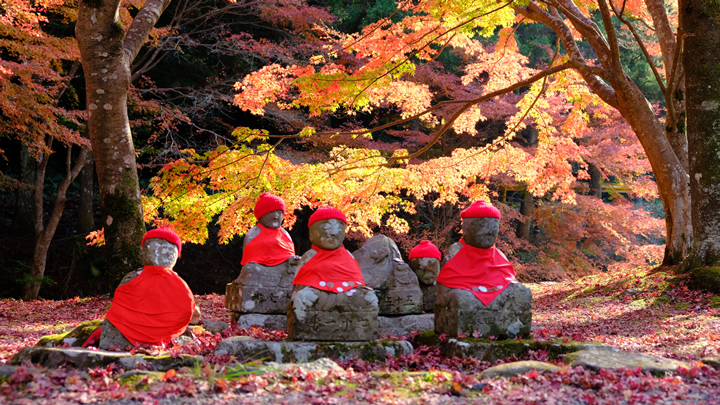From daimyo Ouchi Yoshitaka to the samurai Uesugi Norizone, Tainei-ji Temple is associated with many famous names from Japanese history.
Tainei-ji Temple was established in 1410 by military commander Washizu Hirotada, and is one of the foremost temple of the Soto school of Zen Buddhism. In its day, Tainei-ji was prosperous enough to be known as the "Koya of the West," after the sacred mountain in Wakayama. In the Muromachi Period (1333-1573), Tainei-ji Temple became known as the final resting place of Yoshitaka Ouichi, Western Japan's glorious military commander. The temple grounds are broad, and include the main hall, which was reconstructed in the Edo Period (1600-1868); the remains of the main gate's original cornerstone; a pond in which it is said Yoshitaka Ouichi saw the reflection of himself that told him his end was near; and jigsaw-style construction with stone. Proceeding along the temple path near the main hall, visitors will find the graves of Ouichi Yoshitaka, and the vassal of his heir Yoshinaga, each with a moss-covered stone pagoda that seems to speak of their tragic history. Elsewhere on the grounds is the grave of military commander Washizu Hirotada, a grave said to be that of Uesugi Norizane, the shogun's deputy of the Kanto area during the Muromachi Period; and the grave of the chief vassal of the Mori Clan in the Edo Period, all speaking to the temple's age. Furthermore, the temple is home to a monument to a poem about Omijima Island written by Kagai Kodama, a poet who wrote from the Meiji (1868-1912) to early Showa (1926-1989) Periods. This spot is well known as a location for cherry blossoms in the spring and colorful leaves in the fall.
The stone Banjaku-kyou Bridge, which crosses over Tainei-ji River, dates to the early Edo Period, and is one of three unusual bridges in Yamaguchi Prefecture.








